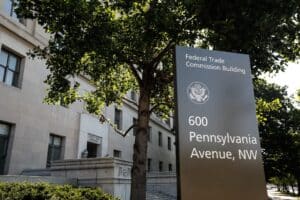When can the president tell government agency directors, “You’re fired”?

On Wednesday, the Supreme Court will hear oral argument in Collins v. Mnuchin, challenging the structure of the Federal Housing Finance Agency (FHFA). Congress created this new federal agency in 2008 in response to the mortgage lending crisis. The FHFA has sweeping authority over our nation’s housing finance system, including the power to bring charges against regulated entities for unsound financial practices or other violations of the law and impose penalties for those violations. It’s run by a single director who serves a five-year term and may only be removed “for cause” by the president. This case raises the important constitutional question: Is the nation’s chief executive, the president, really in charge?
Congress has created numerous agencies insulated from presidential control for more than a century, starting with the Interstate Commerce Commission in the 1880s. Throughout the early 20th century and into the New Deal era, Congress set into motion the modern administrative state, a new form of government where so-called apolitical experts enjoy the freedom to come up with solutions for every problem that ails Americans—free from political accountability. While this may sound like a more convenient way to govern, our Constitution vests “the executive power” in the president—not just some of it, but all of it.
It’s his (or her!) job to enforce the law. The Founders knew that the president would not be able to do that all by himself, so the Constitution includes a process for appointing executive officers who assist the president in carrying out the law. The Constitution does not mention how to remove these officers, but the First Congress debated the issue and recognized that the president must be able to fire his subordinates freely. This was the prevailing view until 1935 when the Supreme Court changed course.
In Humphrey’s Executor v. United States, the Court decided that some of the New Deal era agencies didn’t really exercise “executive” power so Congress could limit the president’s ability to remove the heads of those agencies. And the administrative state was off to the races. In the decades that followed, Congress created an ever-expanding universe of federal agencies. Today, there are more than 450 federal agencies that regulate everything from highways to healthcare. And they issue roughly 27 regulations for every single law passed by Congress. (Listen to this episode of the PLF podcast, Dissed, to learn more about the most famous executive removal power case and the scathing dissent.)
In recent years, however, the Supreme Court has shown an increasing skepticism of Congress’ attempts to insulate agencies from political accountability. Just last term, the Court held in Seila Law v. Consumer Financial Protection Bureau that the Consumer Financial Protection Bureau (CFPB) was unconstitutionally structured. The Justices may well agree that the FHFA, which has the same structure as the CFPB, doesn’t withstand scrutiny. But if they do, what happens next?
In Seila Law, the Court supposedly “fixed” the constitutional problem by taking a drafting pen to the text of the statute. The Court effectively erased the text limiting the president’s ability to fire the CFPB head and called it a day. But that didn’t provide any actual relief to the law firm that challenged the CFPB’s structure. Seila Law had been investigated by the CFPB for possible fraud and was hauled into court for not complying with the CFPB’s demand for documents. The firm asked the Court for relief from the CFPB’s demand for documents because the agency had been unconstitutionally structured.
The challengers in Collins v. Mnuchin are shareholders of entities regulated by the FHFA that the shareholders say were forced to pay the government an exorbitant amount of money. And just as Seila Law wanted real relief, the Collins shareholders want real relief for losing out on billions of dollars due to the FHFA’s actions.
PLF submitted an amicus brief supporting Collins, and in it, we argue that it’s not the Justices’ job to rewrite statutes that contain constitutional violations. After all, we can’t know what Congress would have done if it knew it couldn’t create the agency as it wanted. Instead of trying to figure out what Congress might have or should have or could have done, the Court should just nullify the actions taken by the FHFA head that injured the Collins plaintiffs—and leave it to Congress to decide how to make the statute constitutional. This would encourage members of Congress to comply with the Constitution the next time they decide to create a new federal agency and give Americans injured by unconstitutional agency actions the incentive to bring such challenges in the future.







